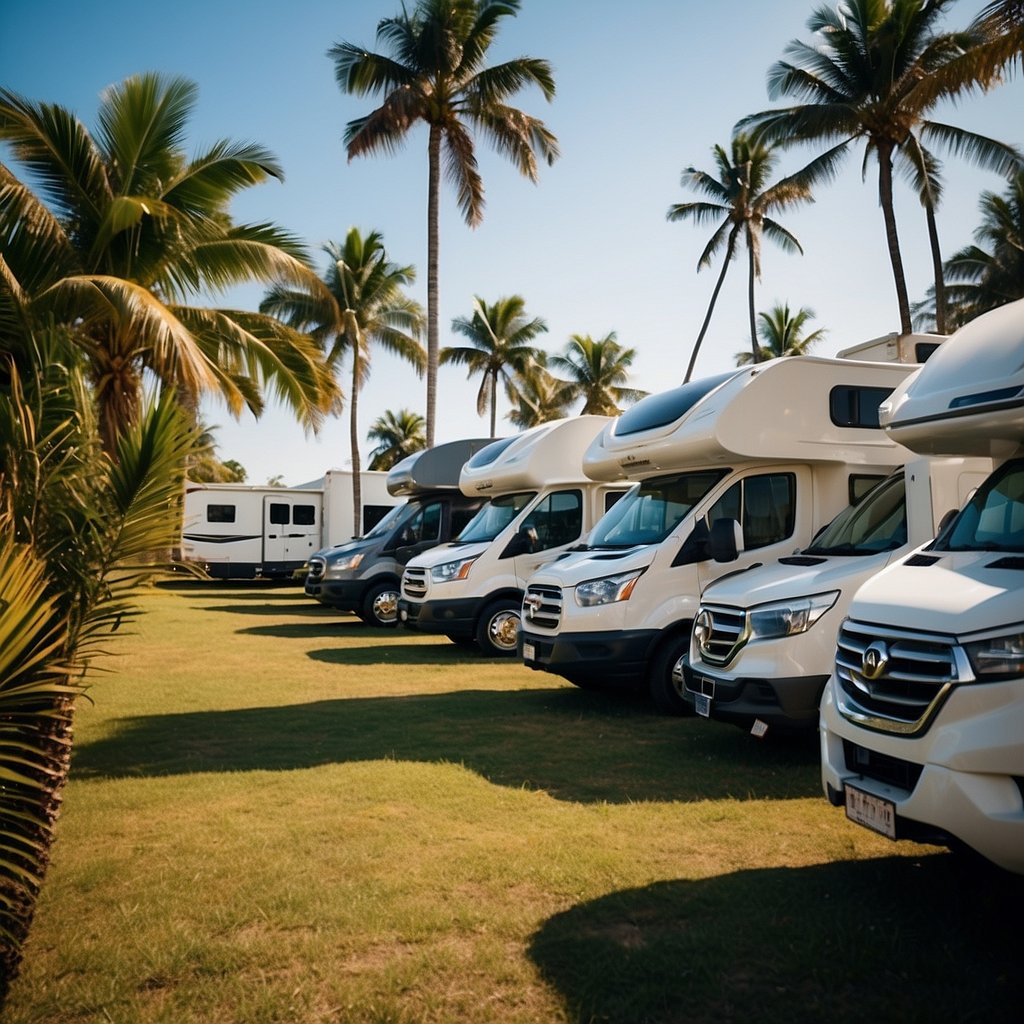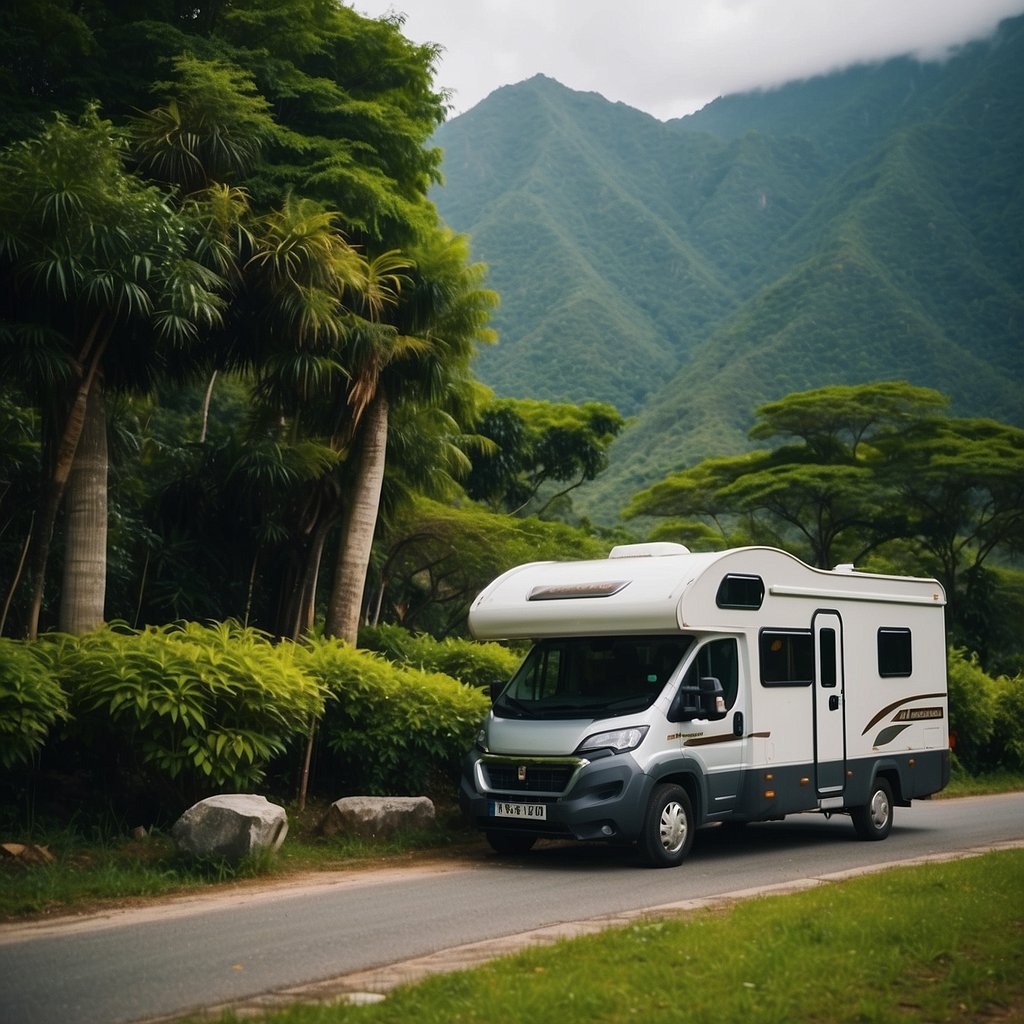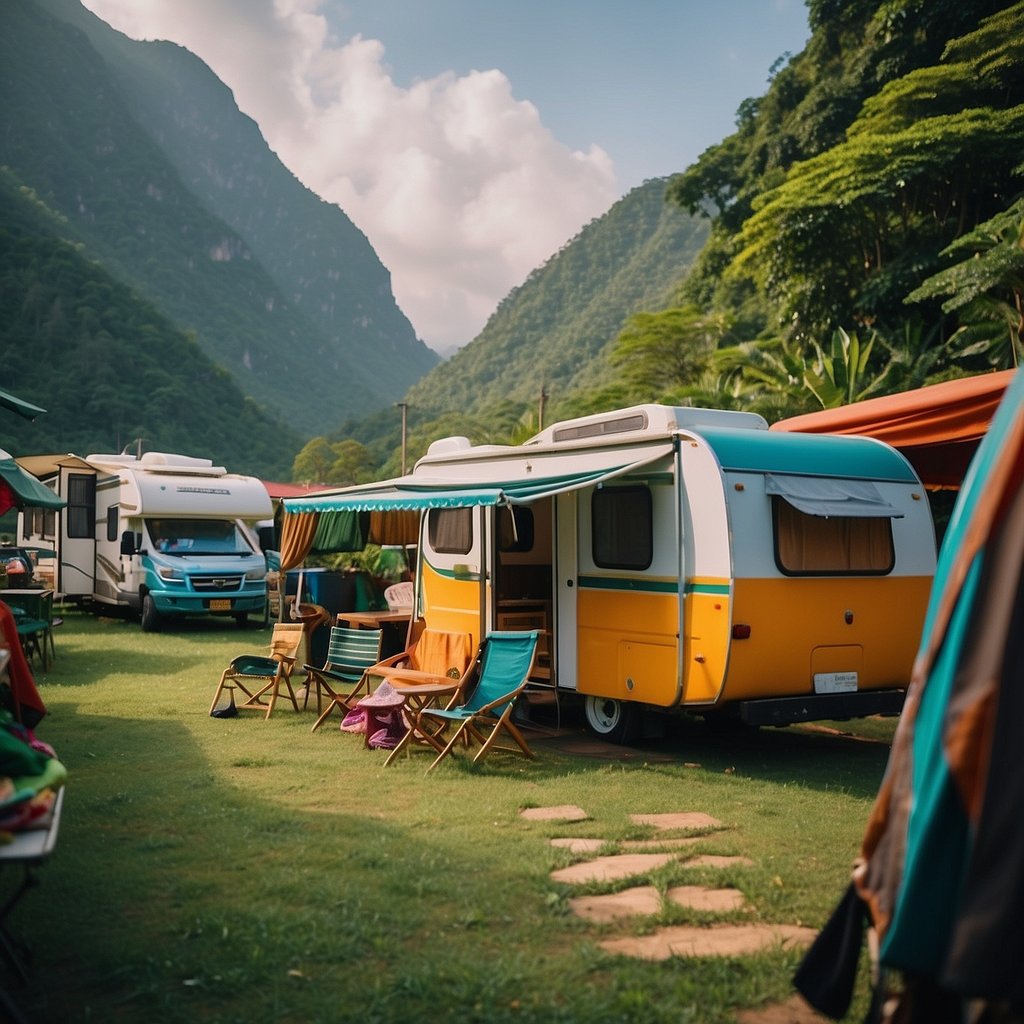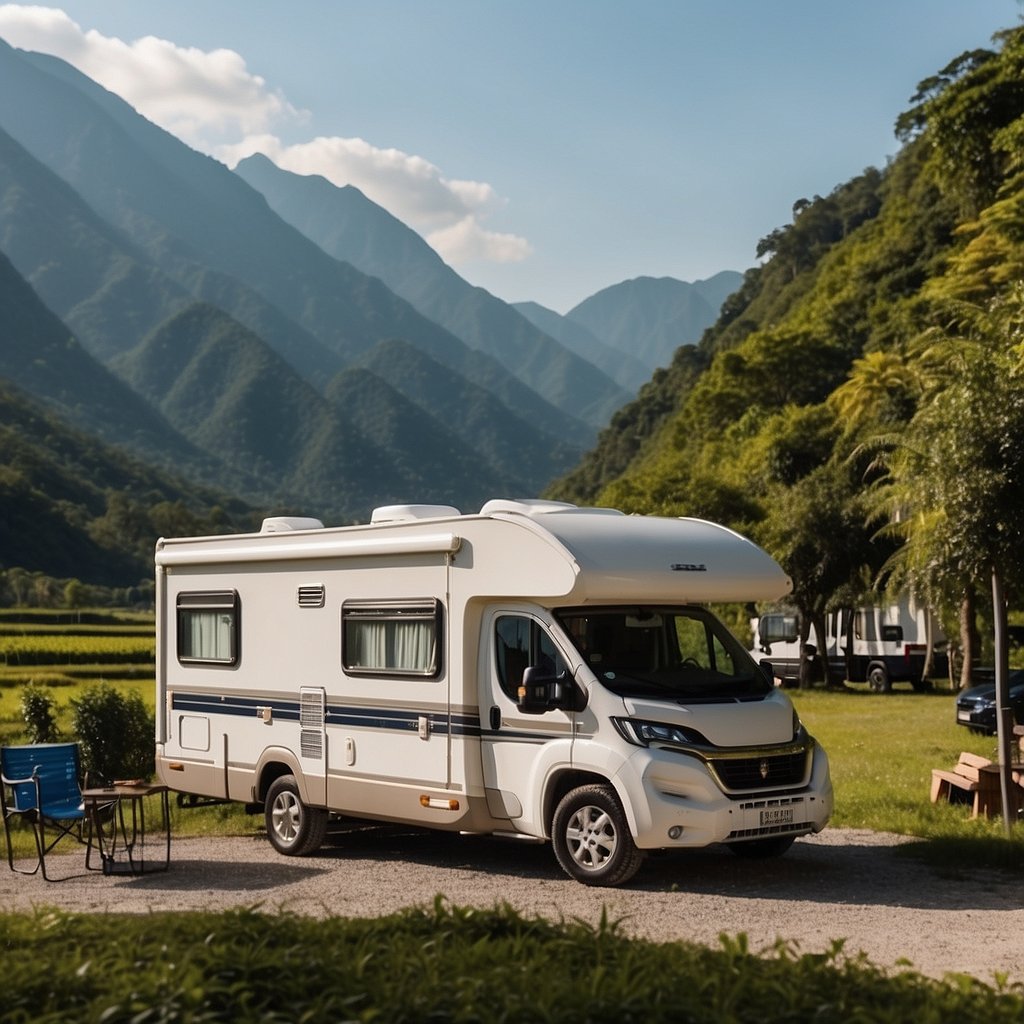Exploring Asia in the comfort of a motorhome offers a unique and intimate adventure into some of the most diverse cultures and stunning landscapes on the planet. From the high-altitude vistas of the Himalayas to the tropical beaches of Southeast Asia, the continent presents a kaleidoscope of experiences for the passionate traveler. Choosing the right motorhome is critical, as it must be robust enough for varied terrains and equipped for self-sufficiency, while providing a homey sanctuary after a day of exploration.
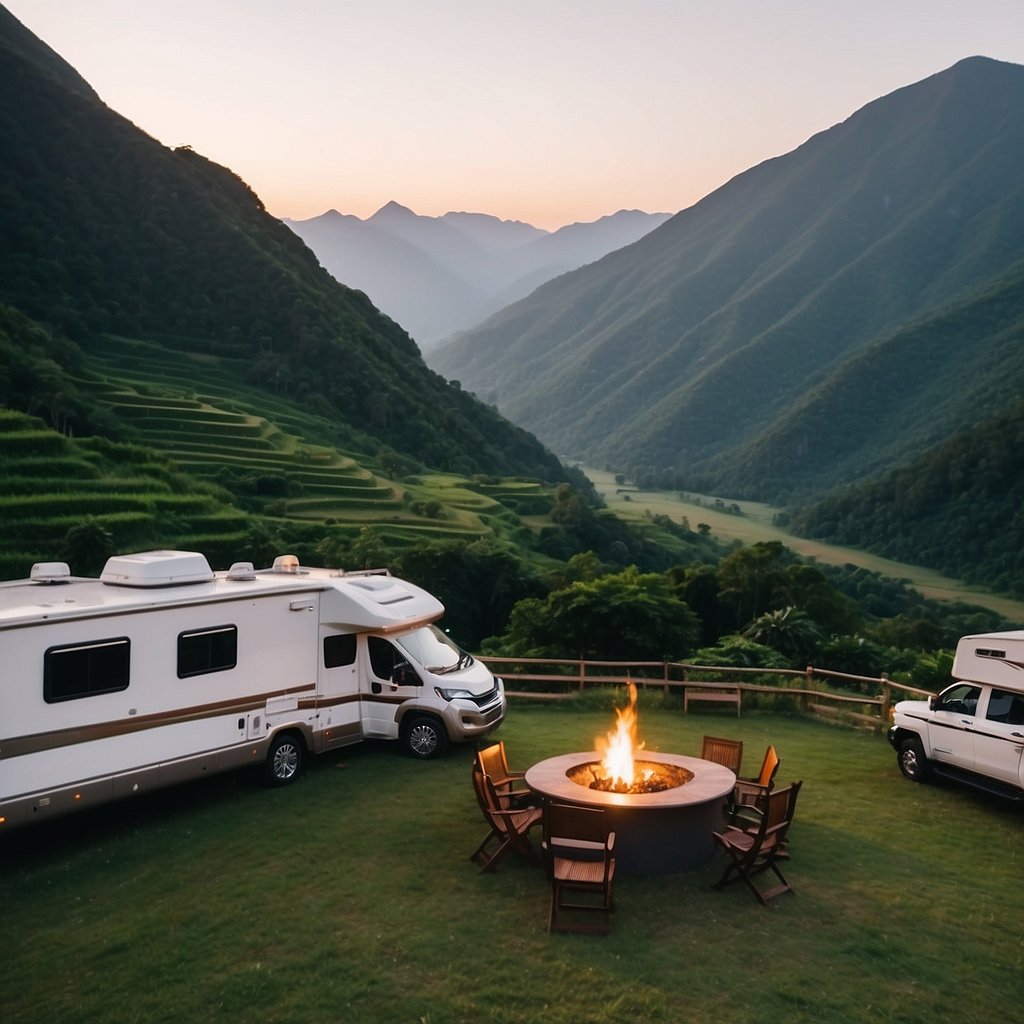
Planning a motorhome trip through Asia requires careful consideration of routes for safety, understanding local driving standards, and being prepared for any necessary vehicle modifications. With the right preparation, travelers can enjoy wild camping in secluded spots, offering a closer communion with nature than traditional accommodations. Budgeting is also essential to ensure a trip that’s both enjoyable and sustainable, taking into account costs like campsite fees, fuel, maintenance, and unexpected expenses.
Key Takeaways
- Selecting an appropriate motorhome enhances the travel experience across Asia.
- Preparation and route planning are essential for a safe and fulfilling journey.
- Factors like budget and vehicle readiness impact the overall travel adventure.
Choosing the Right Motorhome for Your Asian Adventure

When I plan a motorhome adventure across Asia, I focus on matching my travel needs with the right type of vehicle. It’s not just about comfort and style; it’s also about practical considerations such as the terrain, duration of travel, and local regulations.
Understanding Different Types of Motorhomes
I find that knowing the differences between motorhome types is crucial. There are caravans, campervans, and motorhomes, each with varying levels of space and amenities. In Asia, a compact campervan might be easier to maneuver on narrow streets, while a full-sized motorhome offers more living space. If I’m exploring the vast landscapes of Mongolia or the mountainous regions of Nepal, I’d need a vehicle with powerful 4WD capabilities.
Rent vs Purchase: Evaluating Options
Deciding whether to rent or purchase a motorhome is a big decision. Renting can be a cost-effective choice if I’m planning a short trip. Plus, it saves me the hassle of maintenance and storage post-trip. If I expect frequent long-term travel, purchasing might be the right choice, although it requires a significant initial investment.
Essential Gear for a Comfortable Journey
Ensuring I have the right gear is essential for a comfortable journey. I always create a checklist that includes:
- Navigation tools: Updated maps and a reliable GPS system.
- Climate-appropriate clothing: Asia’s diverse climates mean packing for both warmth and rain.
- Campsite supplies: Portable furniture, a cooking kit, and a sturdy set of tools.
By considering these key points, I position myself for a memorable and smooth motorhome journey through Asia.
Top Motorhome Campsites in Southeast Asia
Southeast Asia offers an eclectic mix of campsites for motorhome enthusiasts, from tranquil beachfront spots to mountainous exploration bases. As an avid traveler, I’ve had the pleasure of visiting a variety of motorhome campsites across this vibrant region.
Beachfront Havens in Thailand and Indonesia
Thailand boasts spectacular beachfront campsites such as those found in Khao Sok National Park, where you can enjoy amenities like tent rentals and immerse yourself in activities like trekking and canoeing.
In Indonesia, seaside camping is a dream with locations such as Bali’s serene beaches, where the sound of waves serves as a natural lullaby for travelers parking their motorhomes.
Exploring the Mountains and Nature of Malaysia and Cambodia
When it comes to Malaysia, the highland regions offer lush campsites that are perfect for those who wish to indulge in the cooler climate and towering green landscapes.
Similarly, Cambodia provides a unique experience with its rich history and natural beauty, ideal for motorhome adventurers who are also history enthusiasts eager to explore ancient temples and vibrant wildlife on their journeys.
Unique River & Cultural Experiences in Vietnam and Laos
Vietnam enchants with riverfront camping experiences alongside its majestic natural reserves, such as the one surrounding Ta Xua Mountain with its breathtaking “field of clouds”.
Meanwhile, Laos invites motorhome travelers to partake in its rich culture through riverside camping spots that often include opportunities to engage with local communities and partake in traditional Laotian life.
As I continue to explore Southeast Asia, I am constantly discovering new campsites that cater to a diverse range of preferences, whether it’s beach lounging or mountain trekking. Each country here offers something unique, rendering the region a wondrous mosaic of outdoor experiences for motorhome travelers.
Navigating Asia’s Roads: Safety and Local Driving Standards
When I travel by motorhome across Asia, understanding the diversity in driving standards and prioritizing safety is crucial, especially given the variety of road conditions and traffic in big cities like Tokyo, Beijing, and Mumbai.
Dealing with Traffic in Big Cities
In major cities across Asia, such as China‘s Shanghai and India‘s Delhi, traffic can be particularly dense. Driving here requires patience and heightened awareness. I often find that major thoroughfares can be congested, with locals using their horns frequently—not out of frustration, but as a form of communication to signal their presence. It’s essential to maintain constant vigilance and adapt quickly to the fluid traffic patterns.
Understanding Road Rules and Cultural Norms
Each country within Asia presents its own set of road rules and cultural driving norms. In Japan, for instance, the meticulous adherence to traffic regulations ensures a level of predictability. In contrast, navigating roads in India might involve understanding the more liberal interpretation of lane usage. One common thread, however, is the respect for locals at pedestrian crossings and the unexpected presence of animals on roads, which requires a careful drive through. It’s a given that I always familiarize myself with the local driving laws and customs to ensure compliance and safety.
Experience the Great Outdoors: Best Spots for Wild Camping
As an avid camper and traveler, I’ve come to appreciate unique camping experiences across Asia, where the diversity of nature from mountains to beaches creates a perfect backdrop for both glamping and traditional camping enthusiasts.
Glamping vs Traditional Camping in Asia
In Asia, glamping offers a comfortable and sometimes luxurious way to enjoy the outdoors without sacrificing comfort. For example, I’ve found upscale tents with full beds and private facilities nestled in the scenic beauty of Bali or the serene beaches of Thailand. This form of camping lets you enjoy nature with a touch of luxury.
Traditional camping, on the other hand, connects you directly with raw nature. I have pitched my tent in traditional campsites surrounded by the rugged Himalayas or camped in the wild under the stars in Mongolia. It’s appealing for its simplicity and the sense of adventure it provides – back to the basics, with just the essentials.
Stunning Natural Sites for the Nature-Loving Camper
When seeking stunning natural sites for camping, my journeys have brought me face to face with the awe-inspiring wilderness areas of Asia. For instance, the vast Gobi Desert offers a dramatic setting where I’ve witnessed a sky full of stars, unobstructed by light pollution. Meanwhile, the lush greenery and wildlife in the national parks of Sri Lanka are pristine spots for wild camping by waterfalls and streams, which has filled my journey with the sights and sounds of nature.
For beach lovers, I recommend the secluded shores of the Philippines, where you can camp with the ocean as your front yard. The sound of the waves and the chance to wake up to a swim is unmatched. And for mountain enthusiasts, nothing compares to the numerous natural campsites in the shadow of the majestic Mount Fuji in Japan, where each season brings a different camping experience.
Prepping Your Motorhome for Extended Travel: Maintenance, Mods, and Upgrades
Before embarking on an adventure to the best motorhome campsites in Asia, it’s crucial for me to ensure my vehicle is in top shape and tailored for maximum comfort and efficiency. From routine maintenance to technical enhancements, I focus on key modifications that promise a smoother travel experience.
Routine Checks and Common Repairs
I start with a thorough inspection of my motorhome. My checklist includes:
- Engine and Battery: Inspect the engine oil, coolant, and battery terminals to avoid breakdowns.
- Tires: Check for appropriate tire pressure and tread depth, ensuring safe traction across diverse terrains.
- Leaks and Seals: Examine window seals and the roof for potential water ingress, a common issue with climatic changes.
Replacing worn parts and addressing issues immediately keeps my camper van reliable through long journeys.
Technical Upgrades for Added Comfort and Efficiency
For sustained comfort in my motorhome, making strategic upgrades is a game-changer:
- Solar Power Installation: Embracing solar power enhances self-sufficiency, as detailed in Love Your RV’s insight on extending road trip preparation.
- Climate Control: An upgraded digital thermostat allows for precise temperature regulation, bolstering comfort across Asia’s diverse climates.
- LED Lighting: Switching to LED lights, as suggested by The Wandering RV, not only improves energy efficiency but also extends my vehicle’s battery life.
- Enhanced Connectivity: A WiFi extender ensures I stay connected, crucial for navigating to the next destination or seeking nearby campsites.
Investing in these enhancements enhances my motorhome’s functionality, making travel around Asia’s varied landscapes both enjoyable and hassle-free.
Costs and Budgeting for a Motorhome Trip in Asia
Planning a motorhome trip across Asia involves understanding and managing a range of costs. My aim is to help you budget effectively, considering both daily expenses and those less obvious costs that can add up.
Calculating Daily Expenses and Hidden Costs
When I embark on a motorhome journey through Asia, the daily expenses include campsites fees, fuel, food, and entertainment. On average, you might spend around $50 to $70 per day as suggested by Budget Your Trip. But the hidden costs can affect your budget significantly if not accounted for.
- Fuel: Varies depending on distance traveled and fuel efficiency of the motorhome.
- Campsites: Fees can range greatly based on location and facilities.
- Food: Buying local produce and cooking in the motorhome saves money; however, dining out increases costs.
- Motorhome upkeep: Regular maintenance is key to avoid costly repairs down the road.
- Insurance: Necessary and can be a substantial part of the budget.
I always encourage looking beyond the price per night and considering the amenities offered. High-quality facilities like security, electricity, and Wi-Fi might increase the campsite costs but can save money on other parts like data plans or charging devices.
Money-Saving Tips for Campervan Tourists
To travel frugally, I focus on money-saving strategies specific to motorhome touring in Asia:
- Renting the right size of campervan: Larger vehicles mean more fuel consumption. Opt for compactness and fuel efficiency. Companies like Japan RV Rental often have various options to choose from.
- Planning routes: Minimize distance and time on the road to save fuel.
- Cooking meals: Utilizing the motorhome’s kitchen significantly reduces food expenses.
- Leveraging free camping spots: Whenever possible, use free legal camping sites or public lands.
Being mindful of spending without compromising the quality of the trip is essential for touring Asia in a campervan. Through careful planning and budgeting, my experiences have remained rich and memorable while keeping a tight rein on expenditures.
Encountering Asia’s Diversity: Culture, Traditions, and Local Interactions
Traveling through Asia in a motorhome offers me unique opportunities to immerse myself in the rich tapestry of cultures and traditions that define this vast region. From sampling the local cuisine that tells a story of centuries-old traditions to celebrating with locals at vibrant festivals, my encounters with Asia’s diversity are direct and intimate.
Sampling Local Delicacies and International Cuisine
In my journey across Asia, I visit Cambodia where Amok Fish, a traditional Khmer dish, tempts my palate with its rich coconut milk and curry flavors expertly wrapped in banana leaves. Wholesome, flavorful and steeped in tradition, this dish captures the essence of Cambodian culture. Japan presents a stark contrast with its meticulous and world-renowned sushi; an art form on a plate, reflecting the country’s dedication to aesthetics and craftsmanship in food.
Participating in Traditional Festivals and Events
I partake in local festivities, a vivid expression of cultural heritage. In Japan, I find myself amidst the lively Gion Matsuri in Kyoto, where historical floats parade the streets and the air is filled with festive chants. The spectacle is a sensory delight and a showcase of the community’s commitment to preserving their history. Similarly, in Cambodia, I witness the Water Festival, or Bon Om Touk, marveling at the boat races and the sense of unity that these celebrations bring to the locals.
By experiencing Asia’s diverse food and taking part in its traditional celebrations, I am privileged to see, taste, and feel the rich mosaic of Asian cultures, traditions, and
Logistics of Motorhome Travel in Asia: Permits, Border Crossings, and Shipping
Motorhome travel in Asia involves intricate logistics with a focus on securing the correct permits, abiding by import regulations, dealing with border crossings, and arranging shipping if necessary. I’ll provide guidance to ensure these processes are handled smoothly.
Paperwork and Labor: Understanding Import Guidelines
When planning to travel with a motorhome in Asia, it’s critical to understand the import guidelines that each country enforces. Paperwork is a significant part of this process. For instance, countries like Vietnam may require a pre-arranged visa, and I’ll need to ensure my passport has vacant visa pages and is valid for at least six months. I should be prepared with passport photos and the exact visa fee, preferably in USD, to avoid delays at customs.
Asia’s customs regulations can be stringent, and missing documentation can lead to significant setbacks. The importation of a motorhome might be subjected to specific regulations, such as emission standards and local driving permits, which differ from country to country. It is advisable to get in touch with local embassies or consulates for the most up-to-date information on the required permits and paperwork before shipment.
Planning Cross-Country Routes and Dealing with Customs
Mapping out routes ahead of time saves me from unexpected hurdles at border crossings. I must research the most motorhome-friendly paths, considering weight and height restrictions on roads and bridges. In countries where language barriers exist, it is practical to have all relevant documents translated into the local language for a smooth experience with customs officials.
When dealing with customs in Asia, patience and respect go a long way. Authorities may inspect my motorhome, verifying that nothing is being transported illegally. Therefore, I must have a comprehensive inventory list of items in my motorhome. Furthermore, some Asian countries have quarantine rules where they may require my motorhome to be fumigated.
In terms of shipping a motorhome to Asia, options include Roll-on/Roll-off (RoRo) and container shipping. RoRo is often more cost-effective, but container shipping may offer better protection for my vehicle. I must book in advance and provide the shipping company with all necessary documents, including my motorhome’s registration and my identification, to facilitate the process.
Frequently Asked Questions
As an expert in motorhome camping across Asia, I’ve encountered several recurring inquiries from travelers. My goal here is to provide clear, accurate answers based on firsthand experiences and extensive research.
Which Asian country offers the highest quality motorhome camping experiences?
In Asia, Japan stands out for its high-quality motorhome camping experiences, thanks to an established culture of RV camping, excellent infrastructure, and diverse landscapes that cater to various outdoor preferences.
What factors contribute to the high cost of RV camping in Asia?
The high cost of RV camping in Asia is often due to import taxes on recreational vehicles, limited campsite availability, and the necessity of developing infrastructure to support motorhomes in many regions.
Where can one find premier motorhome campsite locations in Asia?
While there are numerous places to explore, the best motorhome campsite locations are often found in countries with a developed RV culture such as China, where RV-friendly roads and parks are becoming increasingly available.
